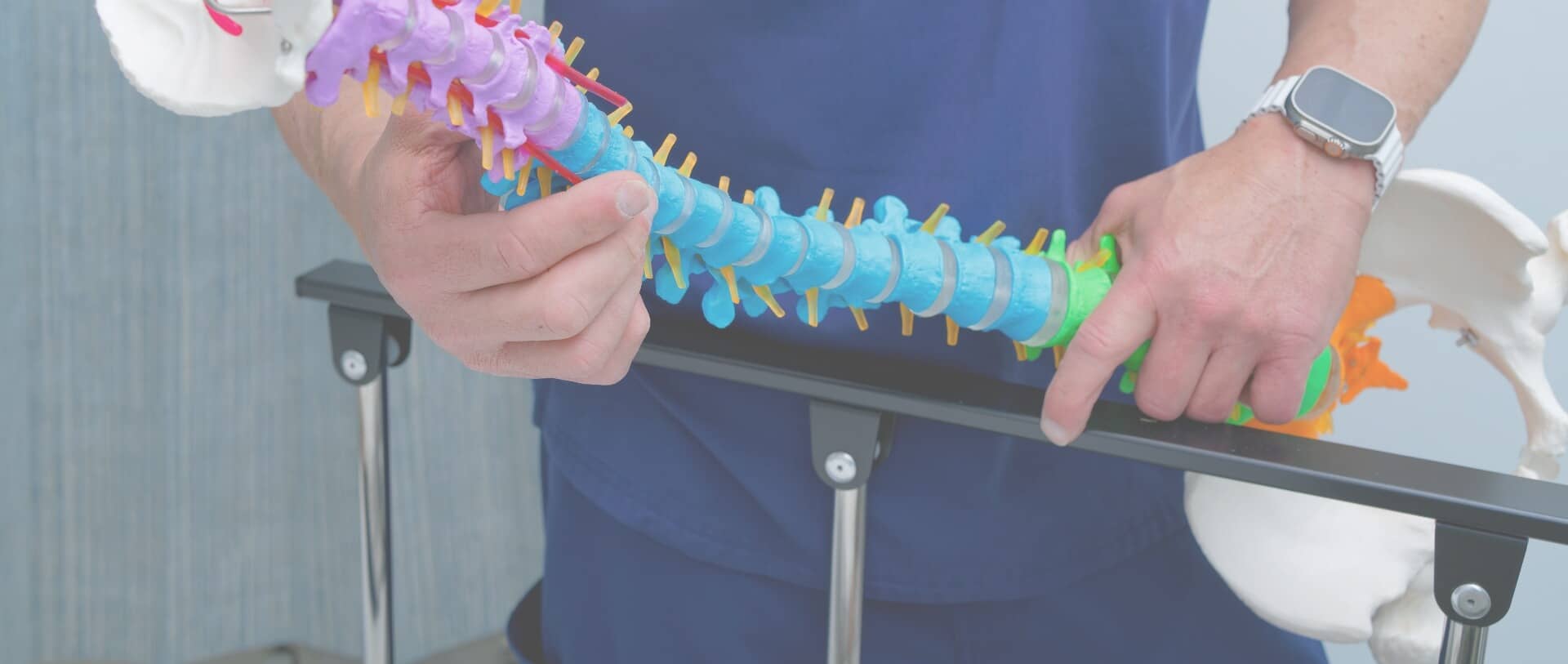
PROCEDURES
Transforaminal Lumbar Interbody Fusion
Transforaminal lumbar interbody fusion, or TLIF, plays a crucial role in addressing various spine conditions, particularly those involving the lower back. This innovative procedure can provide relief from back pain, nerve compression, and spinal instability, ultimately improving a patient’s overall quality of life.
What is Transforaminal Lumbar Interbody Fusion (TLIF)?
TLIF is done to address degenerative disc disease and other lumbar spine conditions. This advanced spine surgery involves the removal of a damaged intervertebral disc, followed by the insertion of an artificial disc spacer and bone graft. The bone graft facilitates the healing of the two vertebral bones, providing a last solution for spinal stability.
What Conditions Does TLIF Surgery Treat?
Transforaminal lumbar interbody fusion is designed to address a variety of spinal conditions that cause lower back pain and related symptoms. Some of the conditions that TLIF surgery can treat include:
- Degenerative disc disease: TLIF can alleviate pain and instability caused by the degeneration of intervertebral discs, which act as shock absorbers between vertebrae.
- Herniated disc: When the gel-like material inside a spinal disc bulges or ruptures, it can compress nearby nerves, causing pain and discomfort. TLIF can remove the damaged disc and stabilize the spine.
- Spondylolisthesis: This condition occurs when one vertebra slips forward over another, often causing pain and nerve compression. TLIF can help realign the vertebrae and stabilize the spine.
- Spinal stenosis: TLIF can create space within the spinal canal to alleviate pressure on the spinal cord or nerves caused by the narrowing of the spinal canal.
Dr. Jamie Gottlieb, a specialist in TLIF surgery, can evaluate your specific condition and determine if the procedure is an appropriate treatment option for your lower back issues.
What are the Steps to the Transforaminal Lumbar Interbody Fusion Procedure?
Transforaminal lumbar interbody fusion is a multi-step procedure that is best performed by an experienced spine surgeon like Dr. Gottlieb. The TLIF aspect of the procedure actually stands for the steps of the surgery:
- Transforaminal: This is the surgical approach used by your surgeon to access the spine, which involves accessing your spinal nerve roots through the foramina. These are the openings in your vertebrae, which is where these nerves exit the spine to connect with other parts of the body.
- Lumbar: Located in the lower back, the lumbar spine carries a significant portion of your body weight. Intervertebral discs in this region are more prone to damage, so this procedure targets the lumbar region of the spine.
- Interbody: The TLIF procedure concentrates on replacing a damaged disc.
- Fusion: Following the replacement of the damaged disc, the bones are fused using a graft, promoting the growth of a single bone and a stable spine.
Am I a Candidate for TLIF Surgery?
The TLIF procedure may be suitable for you if:
- You experience chronic lower back pain.
- You have pain that radiates to your buttocks and legs.
- You exhibit symptoms of nerve damage, such as numbness, tingling, or weakness.
- Your pain worsens when sitting, bending, or moving your lower back
Lower back pain is the second most common cause of disability, which hampers your ability to work and enjoy life. TLIF surgery alleviates symptoms associated with degenerative disc disease and helps you resume your normal routines. An early diagnosis can spare you a great deal of suffering.
What is Recovery From a Transforaminal Lumbar Interbody Fusion?
While your exact recovery timeline can vary from patient to patient, here is a general overview of what you can expect during your TLIF recovery:
- You will likely spend a few days in the hospital for observation and pain management. You will be encouraged within the first day or so to start walking to promote circulation and prevent complications like blood clots.
- Pain will be a part of the early recovery process. Your surgeon will prescribe medication to keep you comfortable. Your reliance on prescription painkillers will decrease as you transition to over-the-counter medications and eventually experience less pain.
- After surgery, you will need to avoid certain activities that could strain your back, like lifting heavy objects or bending at the waist. Your surgeon will provide clear instructions. While you may be able to return to work and normal activities within a few weeks, strenuous activities should be avoided for several months to allow your spine to health properly.
- Physical therapy is a key component of TLIF recovery. You will work with a physical therapist throughout your recovery to improve your strength, flexibility, and mobility.
Complete recovery from a transforaminal lumbar interbody fusion can take several months. It’s important to be patient with the process. Every patient’s recovery experience is unique. Many patients experience significant improvement in their pain and function within a few months, but it may take a year or more to achieve the full benefits of the surgery.

Top Quality Care at Gottlieb Spine
Dr. Jamie Gottlieb has honed his skills to provide patients with the most advanced and effective solutions for lower back pain. His specialization in TLIF not only ensures precision during the procedure, but allows for quicker recovery times and reduced postoperative discomfort. Schedule a consultation at Gottlieb Spine to learn how you can benefit from Dr. Gottlieb’s expertise.
SCHEDULE A CONSULTATION